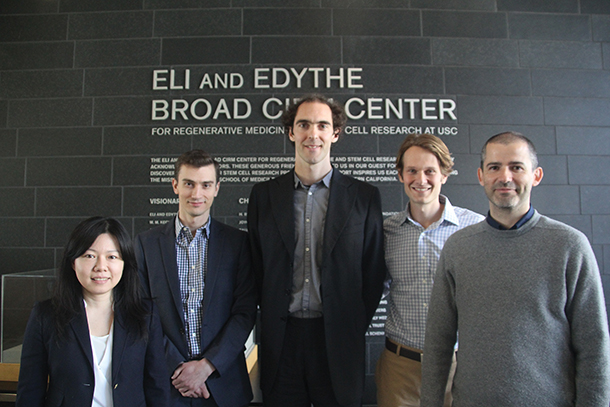The next generation of scientists is turning to stem cells to advance our understanding of systems ranging from the blood to the brain, from the liver to the lungs. Six of these scientists presented their research at the Junior Faculty Candidate Mini-symposium hosted by USC’s Department of Stem Cell Biology and Regenerative Medicine, held Feb. 10 and March 8.
Alexander Pollen, PhD, from the University of California, San Francisco, addressed a chapter in the history of life on Earth: the evolution of the human brain over the last six million years. He discussed how neural stem cells contribute to brain development, how a particular genetic variation may be responsible for increasing brain size and improving learning in humans, and how scientists can use stem cells to learn more about this complex organ.
Sergei Doulatov, PhD, from Boston Children’s Hospital and Harvard Medical School, explained how to use stem cells to model anemia in a petri dish. He exposed these cells to drug-like compounds, one of which suggested a way to treat a form of the disease known as Diamond-Blackfan anemia.
Hsiang-Ying (Sherry) Lee, PhD, from the Whitehead Institute for Biomedical Research, offered an equally sanguine view of the potential of blood progenitor cells to treat anemia. She described how environmental and molecular signals trigger these progenitor cells to self-renew by replicating themselves, or to differentiate into red blood cells and other mature cells.
Joan Font-Burgada, PhD, from the University of California, San Diego, discussed another regenerative cell type: liver cells, which are helpful when they repair injuries, but harmful when they cross the line into cancerous proliferation. He identified a group of highly regenerative liver cells, dubbed hybrid hepatocytes, with great potential for transplantation to treat liver disorders. He also illuminated the genetic signals that unleash cholangiocarcinoma, an aggressive bile duct cancer.
Purushothama Rao Tata, PhD, from Massachusetts General Hospital, also touched on the nexus between regeneration and cancer. He highlighted how lung cells maintain a high degree of “plasticity,” or the ability to become other cell types in health, injury, and cancer development, also known as tumorigenesis.
Expanding the conversation to the field known as “synthetic biology,” Leonardo Morsut, PhD, from the University of California, San Francisco, introduced “synNotch,” a group of synthetic signals that can direct the behavior of cells. Eventually, synNotch or a similar system could enable scientists to engineer and study tissues with special properties, such as enhanced injury resistance or regenerative capacity.
Andy McMahon, PhD, chair and professor of the Keck School of Medicine’s Department of Stem Cell Biology and Regenerative Medicine, thanked these top candidates for junior faculty positions at USC for sharing their inspiring work.
“I’d just like to thank all of our speakers,” he said. “It’s been a spectacular day.”
— Cristy Lytal


